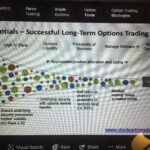When I placed my first real options trade, I was full of confidence—and full of mistakes.Within three months, I had lost over 80% of my small account. Why? Because I was chasing setups, not building a foundation. I didn’t know what I know now: the most successful options traders don’t focus on “winning trades.” They focus on the three pillars that support long-term survival and profit. Let’s break them down, with stats and insights most traders never see.
1. Risk Control: The Real Secret Weapon
Why it matters:According to FINRA, over 40% of new retail options accounts experience margin calls in their first year. Meanwhile, a 2022 study found that 90% of retail traders lose money on options over time.Yet this isn’t about intelligence—it’s about position sizing. What pros do differently:Many professionals risk 1% or less of their account per trade. Market makers hedge exposure continuously to stay delta- and gamma-neutral. Survivors size their trades to stay in the game, not to win big in one shot.
SEO Tip for Readers:If you’re Googling “how to win at options trading,” start by searching “options trading risk management” instead. That’s where the edge begins.
2. Strategic Consistency: The Boring Edge That Works
Common myth;Switching between straddles, iron condors, and weekly YOLO trades “based on the market” sounds smart—but it destroys edge.
The data says otherwise:The CBOE PutWrite Index, which systematically sells cash-secured puts on the S&P 500, outperformed the S&P 500 with lower volatility from 1986 to 2022.
Boring, rules-based strategies outperform emotional decision-making.
Why consistency wins:You need hundreds of trades for a statistical edge to play out. Emotional switching dilutes edge and makes results unpredictable. Professional firms automate rule-based options strategies to remove bias.
3. Volatility Mastery: More Than Just “High IV Sells”
Most traders believe:“IV is high, so I should sell options.” But this thinking can backfire—hard.
What most don’t know:A landmark study in the Journal of Financial Economics found that implied volatility systematically overstates realized volatility—but not during crashes, when it understates risk. Nuances of volatility you should understand:Mean reversion isn’t guaranteed. In crashes, volatility spikes even when it’s already “high.” Shorting volatility too aggressively before a regime shift (like in early 2020) can blow up portfolios. Skew, kurtosis, and IV rank matter more than just IV level.
Advanced Tip:Start tracking volatility regimes instead of relying on a fixed threshold. IV rank and historical volatility are your warning signs.
Final Thoughts: Master the Foundations, Not Just the Plays
Most traders are looking for the next hot trade. Few are building the foundation required to survive long enough to profit. If you focus on these three pillars—risk control, strategic consistency, and volatility mastery—you’ll separate yourself from the crowd. Success in options doesn’t come from a hot streak. It comes from lasting long enough to let probability do the heavy lifting.






